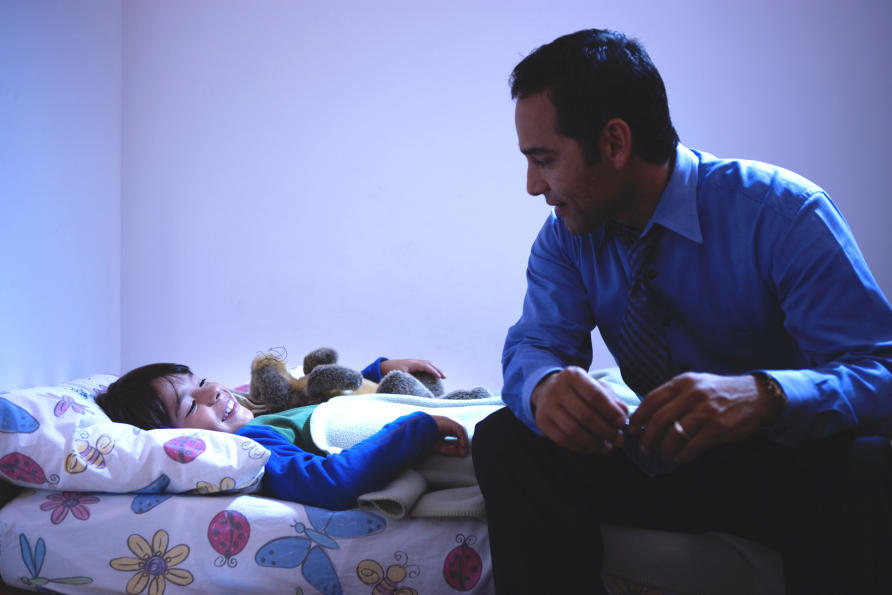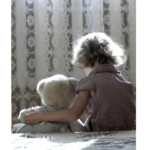
08 Dec Are separated parents getting better at shared care?
Separated parents in Australia are becoming increasingly better at negotiating shared care arrangements for their children, writes Dr Esperanza Vera-Toscano
Back in 2001, only 26 per cent of children with a non-resident parent (overwhelmingly the father) were spending at least one night a week with that parent.
But in the last 18 years, that proportion has soared to over 40 per cent in 2018, according to the latest Household, Income and Labour Dynamics in Australia (HILDA) Survey.
The proportion of children with separated parents spending three or more nights a week with the non-resident parent has risen from just 4 per cent in 2001 to 16 per cent in 2018.
Perhaps unsurprisingly the proportion staying over with a non-resident parent is highest among children aged six to 12 where just over 48 per cent are now spending at least one night a week with their non-resident parent.

HILDA researcher at the University of Melbourne Dr Esperanza Vera-Toscano says the findings are in line with a 2010 Australian Government assessment of the 2006 Family Law changes.
“That report also found an increase in shared care, and highlighted that the majority of these arrangements are made without intervention from courts,” says Dr Vera-Toscano.
“It is good news for children who can have a meaningful relationship with both parents after separation.”
The findings also show that over the 2001-2018 period that HILDA has been running, there has been a slight fall in the proportion of children living with just one parent from 16 per cent in 2001 down to 14.5 per cent in 2018.
HILDA is an ongoing annual survey of around 17,000 Australians run by the University of Melbourne. It focuses on issues ranging from family structures and income, to health and lifestyles.
The survey data shows that there has been little change in the rates at which co-resident couples split up, but it does suggest that couples are tending to separate at younger ages than they did in the past.
In 2018, some 220,584 people separated from their co-resident partners – a rate of about five out of every 1000 people. But the age make up of couples separating has become younger.
The proportion of separating couples aged 24 or younger has jumped to almost 16 per cent, up from seven per cent in 2002.
The proportion of separating couples aged 25-34 has also risen slightly to almost 39 per cent from 36 per cent.
Perhaps reflecting a younger age at separation, the proportion of separations involving dependent children has fallen from 37 per cent in 2002 to 30 per cent in 2018.
Couples include both married and non-married couples, and Dr Vera-Toscano says the younger age of separation may partly reflect increasing rates of cohabitation among young people where the couple live together without necessarily intending from the start to marry or become long term, de-facto partners.
“In other recent research based on HILDA, the Australian Institute of Family Studies has observed a significant increase in cohabitation rates among younger people and this increase may have resulted in greater chances of couples separating, but also greater chances of young individuals partnering as couples.
HILDA can also tell us about the characteristics of couples that are more or less likely to break up, though these are only associations rather than indicators of cause and effect.
“The determinants of couples’ breakdown are complex, diverse and interactive and no single factor can be isolated as the most significant or important reason for couples’ breakdown,” says Dr Vera-Toscano.
Renting privately, owning a house with a mortgage while having kids or being in social housing without kids, are all associated in the HILDA data with a higher likelihood of separation.
Dr Esperanza Vera-Toscano says these results could indicate that stress associated with housing instability may contribute to relationship breakdowns, though she cautions that the cause and effect may move in the opposite direction.
“For example, it may also be that people in less stable relationships will be more inclined to rent rather than buy a home together.”
Financial stress or being on income support are also associated with an increased risk of separation, but interestingly higher incomes are also associated with increased separations.
“This may reflect the fact that, at higher incomes, people are more likely to be able to ‘afford’ separation, for example because each partner has their own independent source of income,” says Dr Vera-Toscano.
 Perhaps unsurprisingly, couples with more traditional views on marriage and children (like disapproval of unmarried couples living together, or believing it is best for children to have both parents at home) were less likely to break up.
Perhaps unsurprisingly, couples with more traditional views on marriage and children (like disapproval of unmarried couples living together, or believing it is best for children to have both parents at home) were less likely to break up.
Couples, where one of the partners is from a predominately non-English speaking country, are also associated with reduced likelihood of break up.
HILDA suggests poor general health has little association with separation except for couples with children where it is associated with a reduced risk of separation.
However, couples with children where one of the partners is living with a disability is associated with a higher risk of separation.
Having at least one of the partners as a smoker is associated with a higher risk of break up, but because this variable is based on the individual the HILDA data doesn’t tell us whether one or both partners are smokers.
When it comes to regular alcohol consumption, HILDA found individuals who have children and who drink regularly (defined as drinking on five or more days of the week) are associated with a lower risk of separation.
But Dr Vera-Toscano says this association has to be treated with caution as again this variable refers to the individuals, not to the couple. That means we don’t know if both partners drink.
“Empirical evidence shows that couples often break down as a result of problems associated with alcohol, drugs and gambling.
“Apart from the economic drain they cause, such addictive behaviours often bring associated problems of domestic violence,” she says.
She warns that the association between a reduced likelihood of separation and regular drinking may have less to do with drinking and more to do with couples who enjoy the same thing (in this case a drink) simply being more compatible.
Indeed, an analysis of data on almost 20,000 married couples in Norway found that spouses who consume about the same amount of alcohol were less likely to divorce than pairs where one partner is a heavy drinker and the other is not — especially when the wife is the one doing the drinking.
“With regards to drinking (and quite likely to doing drugs or gambling) — as in so many other facets of marriage — compatibility may be what is keeping couples together rather than the activity itself.”
This article was first published on Pursuit. Read the original article.




